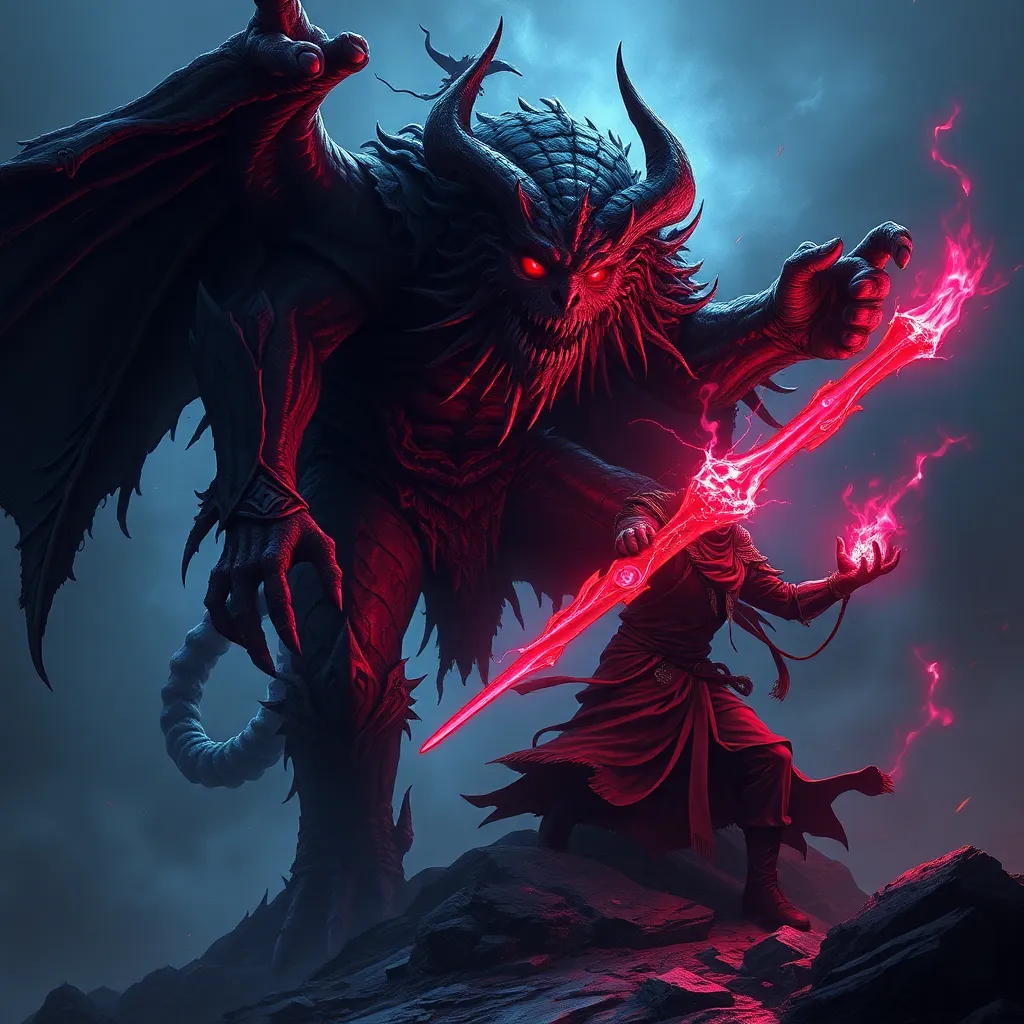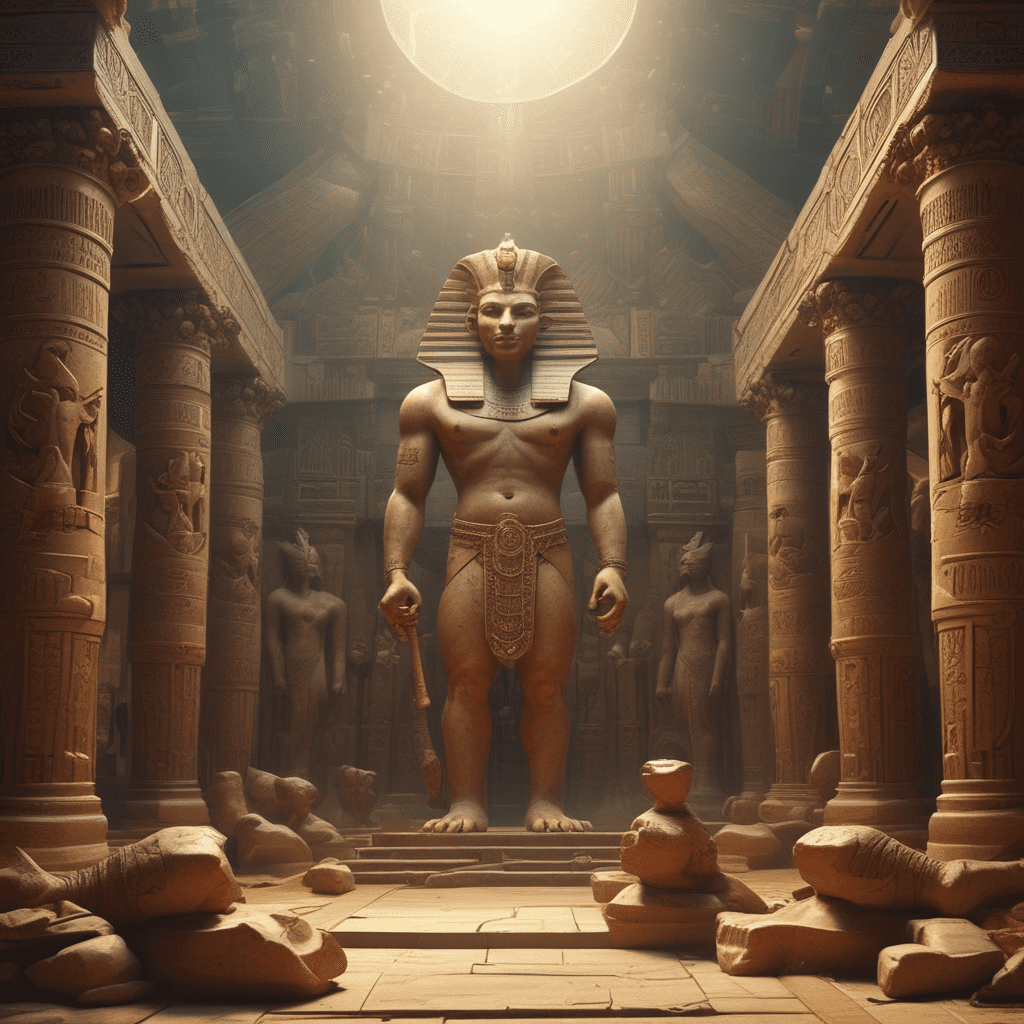The Strigoi’s Weakness: Discovering the Ways to Defeat the Undead
I. Introduction to Strigoi
The Strigoi are a fascinating and terrifying aspect of Romanian folklore, often depicted as restless spirits or undead beings. These creatures have captured the imaginations of many through their haunting characteristics and the rich cultural narratives surrounding them.
A. Definition and Origin of Strigoi
The term “Strigoi” refers to a type of undead creature that inhabits Romanian mythology. They are often viewed as the spirits of the deceased who return to seek vengeance or fulfill unfinished business. The origins of Strigoi can be traced back to ancient beliefs regarding life after death and the fear of the dead returning to the world of the living.
B. Cultural Significance and Folklore
Strigoi hold a significant place in Romanian culture, representing the fears and beliefs surrounding death, the afterlife, and the supernatural. Folklore often describes them as having the power to suck the life force from the living, leading to widespread fear and various protective practices among communities.
C. Overview of Strigoi Characteristics
Strigoi are typically described as having distinctive features:
- They may appear as pale, gaunt figures.
- Strigoi are often depicted with long hair and sharp nails.
- They can be both corporeal and incorporeal, shifting between forms.
- Some tales suggest they can transform into animals, particularly wolves or bats.
II. Understanding the Nature of the Strigoi
The Strigoi are often confused with other types of undead creatures, such as vampires or zombies. Understanding their unique nature is crucial for identifying their weaknesses.
A. Differences between Strigoi and Other Undead Creatures
While Strigoi share similarities with vampires, there are key differences:
- Strigoi are often associated with a specific cultural context, primarily Romanian.
- Unlike traditional vampires, Strigoi may not always require blood to sustain themselves.
- They can return to their original form upon death, which differentiates them from other undead beings.
B. Common Myths and Misconceptions
Many misconceptions arise regarding Strigoi, including beliefs about their powers and behaviors. Some myths suggest that Strigoi can only be defeated through specific rituals or that they are invulnerable to conventional means.
C. The Psychological Impact of Strigoi in Literature and Media
The Strigoi have a substantial presence in literature and media, often symbolizing humanity’s fears of death and the unknown. Their portrayal can evoke psychological responses, reinforcing societal anxieties around mortality.
III. Historical Accounts of Strigoi Encounters
Throughout history, there have been numerous accounts of Strigoi encounters, often leading to panic and community action.
A. Notable Historical Cases
Historical records from Romania detail various incidents involving Strigoi, sparking fears among local populations. One notable case involves a supposed Strigoi named “Vlad,” who was believed to torment his village after his death.
B. Analysis of Strigoi Behavior in Folklore
Folklore often depicts Strigoi as vengeful beings who return to haunt their families or communities. This behavior serves as a cautionary tale about the consequences of unresolved issues in life.
C. Lessons Learned from Past Encounters
Past encounters with Strigoi highlight the importance of community awareness and education about folklore, encouraging proactive measures to address fears and misunderstandings.
IV. Identifying Strigoi Weaknesses
Understanding Strigoi weaknesses is essential for devising effective strategies for combating these undead entities.
A. Common Weaknesses: Sunlight, Silver, and Holy Symbols
Strigoi are believed to be vulnerable to:
- Sunlight: Exposure to sunlight can weaken or destroy a Strigoi.
- Silver: Silver weapons or objects are thought to have purifying properties against the undead.
- Holy Symbols: Religious artifacts, such as crosses or holy water, can repel Strigoi.
B. Psychological and Emotional Vulnerabilities
Strigoi may also possess psychological vulnerabilities, such as fear of their past life or connection to unresolved emotional issues. Understanding these can help in crafting strategies to confront them.
C. Environmental Factors that Affect Strigoi
Certain environments may influence Strigoi behavior and strength. For example, they are often weakened in places with strong religious significance or in daylight.
V. Strategies for Defeating Strigoi
Various methods have emerged over time, ranging from traditional practices to modern interpretations, for confronting and defeating Strigoi.
A. Traditional Methods: Garlic, Stakes, and Fire
Historically, communities have relied on various traditional methods, such as:
- Garlic: Widely believed to ward off evil spirits.
- Stakes: Wooden stakes driven through the heart are a classic method for neutralizing undead creatures.
- Fire: Burning a Strigoi’s remains is considered one of the most effective ways to ensure they do not return.
B. Modern Interpretations and Techniques
In contemporary society, new methods have emerged, including:
- Utilizing technology to document and study Strigoi sightings.
- Community workshops to educate locals on folklore and safety measures.
- Engaging in cultural storytelling to demystify Strigoi legends.
C. Case Studies of Successful Defeats
Examining successful cases of Strigoi defeats offers valuable insights. Many of these involve community cooperation and the strategic use of traditional methods.
VI. The Role of Community in Combating Strigoi
Community involvement is crucial in addressing the fears associated with Strigoi and protecting against potential threats.
A. Historical Community Responses to Strigoi Threats
Historically, communities have banded together to confront Strigoi threats, often conducting rituals or forming vigilante groups to investigate sightings and reports.
B. Building Awareness and Knowledge
Educating the community about Strigoi and their folklore can help dispel fears and encourage rational responses rather than panic-driven actions.
C. The Importance of Cooperation and Shared Knowledge
Sharing knowledge and experiences among community members fosters a collaborative effort to understand and address the Strigoi phenomenon.
VII. Strigoi in Popular Culture
Strigoi have permeated popular culture, influencing various forms of media and storytelling.
A. Depictions in Literature, Film, and Television
From Bram Stoker’s “Dracula” to numerous films and series, Strigoi continue to captivate audiences. These portrayals often blend traditional folklore with modern storytelling techniques.
B. Impact of Pop Culture on Public Perception
Pop culture has significantly shaped public perception of Strigoi, often romanticizing or altering their characteristics for entertainment purposes.
C. The Evolution of Strigoi Myths in Modern Storytelling
Modern storytelling has evolved to include more nuanced portrayals of Strigoi, exploring their motivations and humanizing their stories.
VIII. Conclusion
In summary, the Strigoi’s weaknesses lie in a combination of traditional beliefs and psychological vulnerabilities. Understanding these aspects is essential for developing effective strategies to combat them.
The ongoing relevance of Strigoi in contemporary society reflects humanity’s enduring fascination with the undead and the supernatural. By preserving folklore and engaging with these myths, we can confront our fears while honoring cultural heritage.
Ultimately, the battle against the undead is not just about defeating creatures of the night but also about understanding the narratives that shape our perceptions of life, death, and the unknown.



